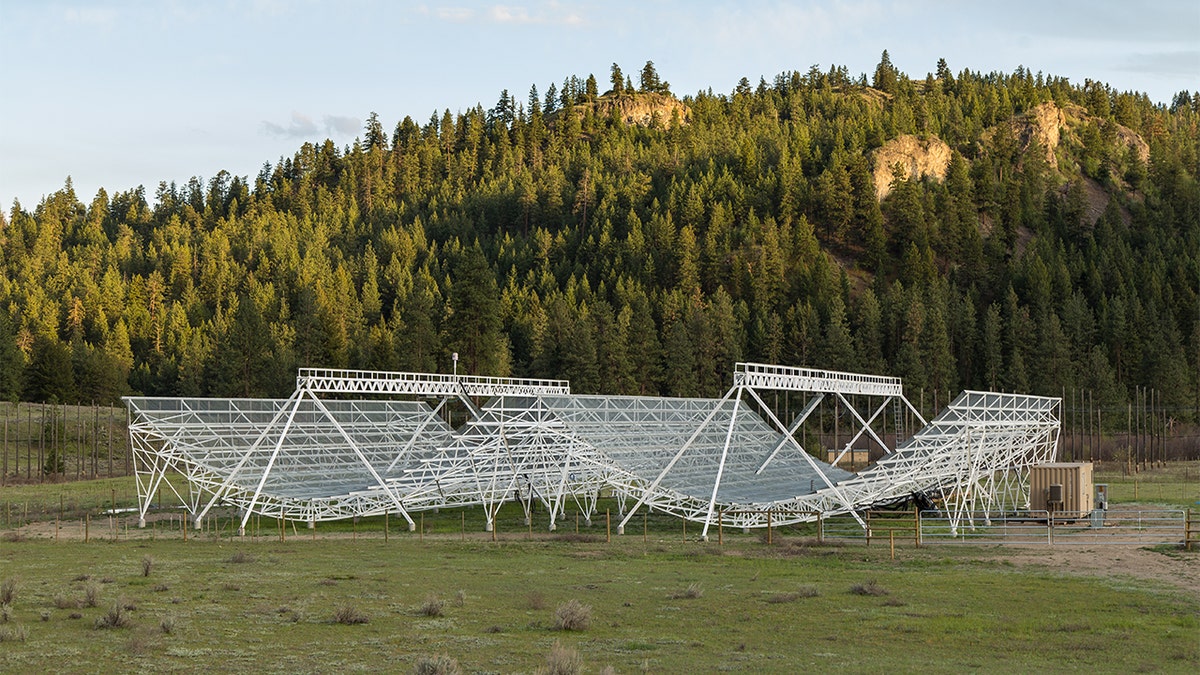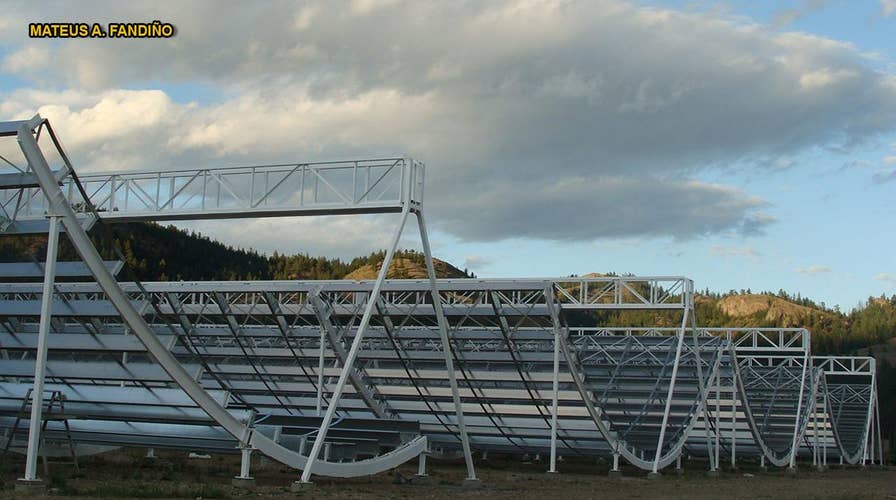Report: Astronomers discover radio signal from galaxy billions of light-years away
Canadian astronomers have reportedly discovered a repetitive radio signal some 2.5 billion light-years away from Earth, only the second example known to mankind. A telescope in British Columbia, otherwise known as Canadian Hydrogen Intensity Mapping Experiment (CHIME), detected 13 pulses, or fast radio bursts (FRBs), in July and August. The first FRB that repeats was detected in 2012.
Canadian astronomers have reportedly discovered a repetitive radio signal some 2.5 billion light-years away from Earth — only the second example known to mankind.
A telescope in British Columbia, otherwise known as Canadian Hydrogen Intensity Mapping Experiment (CHIME), detected 13 pulses — or fast radio bursts (FRBs) — in July and August, according to a Monday report from Nature, a British scientific journal.
NASA SPACECRAFT SNAPS INCREDIBLE PICTURE OF EARTH
The findings were announced by Deborah Good, an astronomer at the University of British Columbia in Vancouver, at a meeting of the American Astronomical Society in Washington on Wednesday.
"Look! We see FRBs," she said of the cosmic flashes, which remain a mystery to astronomers. Before they were spotted over the summer, astronomers reportedly found between 50 and 60 examples of the radio bursts.

CHIME detected 13 FRBs in July and August, according to Nature, a British scientific journal. (Andre Recnik)
Good said that "if we had 1,000 examples, we would be able to say many more things about what FRBs are like."
The CHIME telescope found, as phrased by Nature.com, "the second known FRB that repeats, meaning that the radio flashes re-appear at the same point in the sky." The first FRB that repeats was detected in 2012.
MARS 'TERROR,' FUTURE MOON MISSIONS AND AN EPIC JOURNEY TO THE SUN: 2018'S YEAR IN SPACE
The majority of the FRBs discovered by the telescope showed signs of "scattering," Phys.org reported — which led the CHIME team to believe the radio bursts are "powerful astrophysical objects."
"That could mean in some sort of dense clump like a supernova remnant," Cherry Ng, an astronomer at the University of Toronto, told the news outlet. "Or near the central black hole in a galaxy. But it has to be in some special place to give us all the scattering that we see."
CLICK HERE TO GET THE FOX NEWS APP
Astronomers' studying of FRBs can teach those who study more about where the bursts come from, and whether that region in its galaxy is home to turbulent gas.
"Until now, there was only one known repeating FRB.," astronomer Ingrid Stairs, also a member of the CHIME team, said. "Knowing that there is another suggests that there could be more out there. And with more repeaters and more sources available for study, we may be able to understand these cosmic puzzles — where they're from and what causes them."

